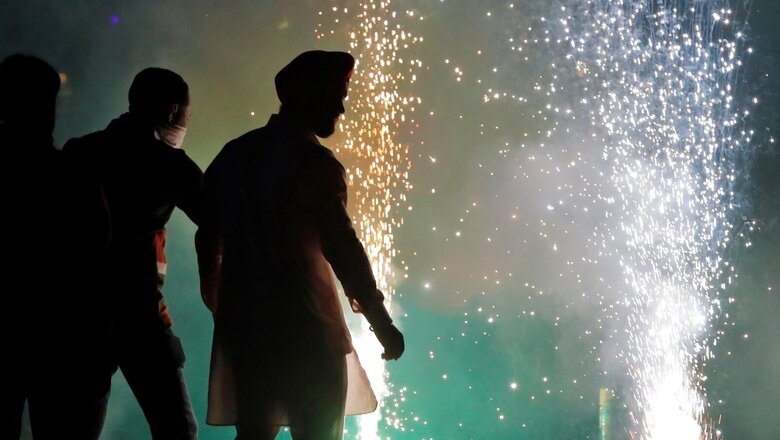
views
Haryana’s Hisar was India’s most polluted city on Thursday with Ghaziabad in Uttar Pradesh a close second as thick smog blanketed the Delhi-NCR region on Diwali morning.
Hisar recorded air quality index (AQI) level of 396 at 8am, while Ghaziabad recorded 389. The overall AQI in Delhi was 334 at 6am as per the Central Pollution Control Board (CPCB). An AQI between zero and 50 is considered ‘good’, 51 and 100 ‘satisfactory’, 101 and 200 ‘moderate’, 201 and 300 ‘poor’, 301 and 400 ‘very poor’, while 401 and 500 is considered ‘severe’.
Air quality in the national capital region has been declining in the lead up to Diwali despite a ban on crackers. According to the Ministry of Earth Sciences’ air quality forecast agency SAFAR, Delhi’s air quality is likely to enter the ‘severe’ zone on Diwali night. Under the zero firecracker emission scenario, Delhi’s PM2.5 concentration is predicted to be in the upper end of the ‘very poor’ category from November 4 to November 6.
“However, even if we consider 50% of firecracker-related emissions of 2019, the AQI is predicted to degrade to the ‘severe’ category from November 4 night and will remain so till November 5,” SAFAR said. The PM2.5 concentration in the national capital can surpass 300 micrograms per cubic metre on November 5. The safe limit is 60 micrograms per cubic metre.
Dipping temperatures, a drop-off in wind speed and farmers torching crop stubble are likely to turn the air even more hazardous further into November. During October and November, stubble burning usually contributes between 20 per cent to 70 per cent of Delhi’s air pollution. Last year, a report from the Environment Ministry showed that the average contribution of stubble burning to Delhi’s air pollution increased from 10 per cent in 2019 to over 15 per cent in 2020.
The contribution of farm fires in Delhi’s air pollution has remained low this season so far due to the record-breaking rainfall in October and “unfavourable” wind direction. However, it is likely to go up to 40 per cent by November 5 as the wind direction is expected to change northwesterly after Diwali, said Gufran Beig, the founder project director of SAFAR.
Read all the Latest India News here



















Comments
0 comment